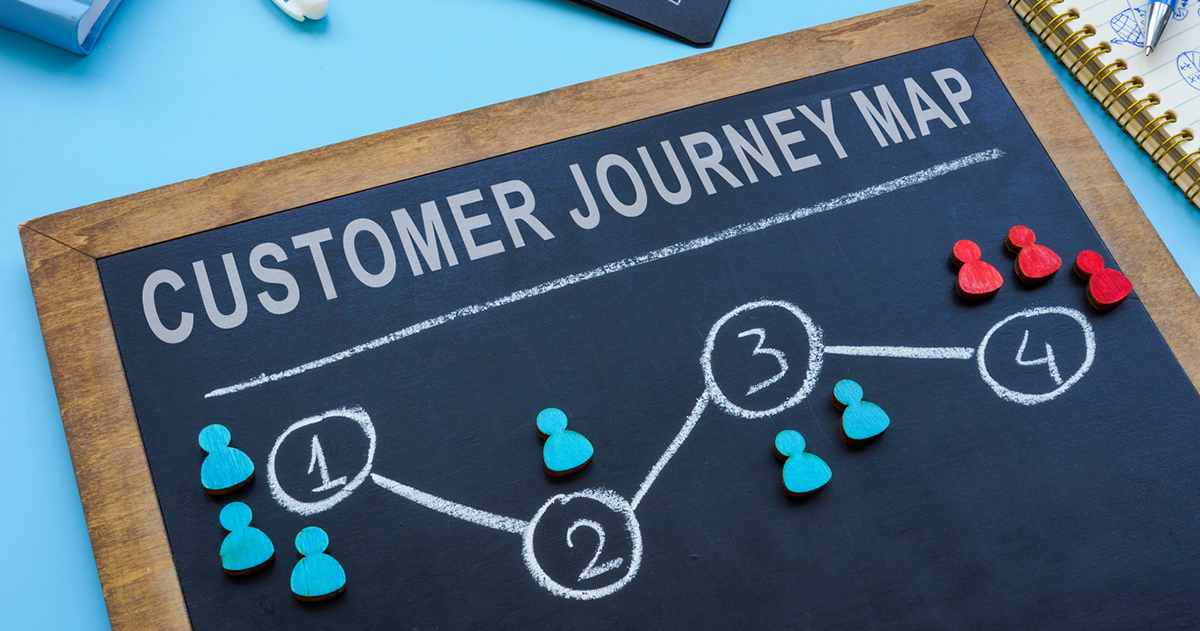 “The Buyer’s Journey.” It sounds kind of epic, doesn’t it? The type of thing that – with an unlimited budget – we could illustrate with a rock opera or a cartoon.
“The Buyer’s Journey.” It sounds kind of epic, doesn’t it? The type of thing that – with an unlimited budget – we could illustrate with a rock opera or a cartoon.
Instead, we’ll save you time and save us time and money by explaining the concept of the buyer’s journey in less than 600 words.
What is the Buyer’s Journey?
The buyer’s journey is the three-stage research process that a potential customer uses before making a purchase.
The three stages are:
1. The Awareness Stage
2. The Consideration Stage
3. The Decision Stage

Let’s take a closer look at what each stage means, and how inbound marketing relates to the buyer’s journey.
Awareness
In the awareness stage, your buyer isn’t really interested in what you make or what you do, at least not yet. They have a problem, and are looking for ways to understand what’s happening.
The content you create at this point should focus on the potential customer’s pain points, rather than on your product or brand.
At this point, the most relevant types of content to offer are reports, blog posts, white papers, or anything that’s focused on general information about the problem.
For example, if you sold paint and someone was looking to repaint their house, you’d write a blog post on preparing and choosing paint colors, without talking about what made your paint the best paint.
Consideration
You might think that consideration stage means that a buyer is considering spending money on you. But we’re not there yet. At this stage, the buyer has moved on from identifying and understanding their problem to looking at a few different companies for a possible solution.
In this stage, relevant content types include videos, live interactions and comparison white papers.
Decision
This is the stage where the buyer is ready to buy. They’ve identified their problem, they know what they need to solve it, and now they’re going to choose someone who will help them reach a solution.
The content you create at this stage can include product and vendor comparisons as well as case studies. Populating your site with a number of case studies can be especially useful, allowing your existing customers to talk about the product/service you provide and how it helped them.
Creating buyer personas will help you understand who your audience is and let you offer the right content at the right time.
Indiana Jones and the Buyer’s Journey
This journey isn’t always a linear one. Buyers have access to so much more information than they did when the concept of the buyer’s journey was first outlined nearly 50 years ago. That means buyers can spend more time doing their research, and continue to research even as they’re heading into the decision phase of their journey.
Therefore, you need to be ready to answer any question buyers could have and put those answers where buyers can access them.
Think about the Indiana Jones movies: whenever he travels, a map shows up on screen, with a red line following his journey from, say, Tibet to Egypt or China to India.
Understanding the buyer’s journey gives you a map for your content. You can say “If the buyer is at stage X, we need them to see content Y.”
And remember, you don’t need to stop making content just because the person taking the journey has become a customer. You can let them know about more advanced features or your product, or introduce them to new services.
If you’re wondering about how the buyer’s journey works, IQnection can help, by researching who your potential customers are, and helping create content that will bring them to your business.
Customers who embark on the buyer’s journey might take their time in making a decision. But if you take the right steps to attract them, their relationship with you will be even longer.
{{cta(’67fa9060-2578-486e-8c20-f3047046f131′)}}










